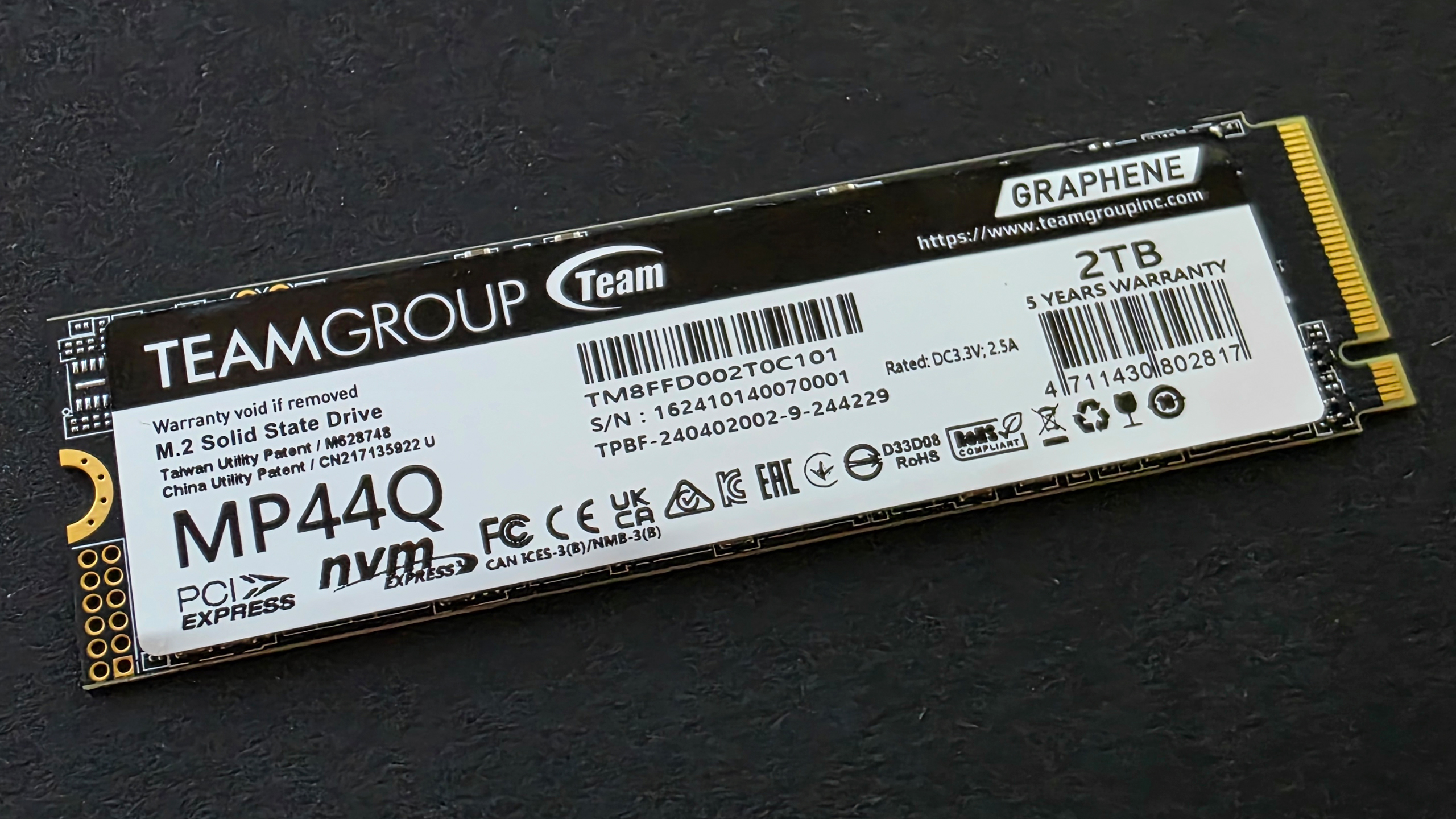Tom's Hardware Verdict
The TeamGroup MP44Q is a budget drive with good performance and power efficiency but with the typical QLC flash drawbacks.
Pros
- +
Reasonable all-around performance
- +
Good power efficiency
Cons
- -
Poor sustained performance
Why you can trust Tom's Hardware
TeamGroup is known for its affordable SSDs, so its new MP44Q joins a solid roster of budget SSDs. This is great for builders and upgraders who are willing to trim their budget when it comes to storage. The popular entry-level MP44L and the “one step up” MP44 now have a companion that fits in right between: the MP44Q. TeamGroup has courteously added a “Q” to the end to indicate QLC flash, which is known to be slower than the MP44L’s and MP44’s TLC, with lower endurance as well. However, there’s more to the story here: The MP44Q has surprisingly good performance, and it’s an inexpensive option for its entire capacity range, which helps one overlook the QLC flash.
The MP44Q also surprises with its excellent power efficiency and the relatively high endurance that's covered by the warranty – this isn’t your father’s QLC flash. In everyday usage, you might not even notice this is a budget drive, unless you engage the nemesis for all QLC-based drives: sustained write workloads. This weakness makes the MP44Q more suitable for use as a secondary drive for games or general data storage or for your PS5, although if you're on a strict budget, it’s good enough for primary storage on any desktop or laptop. The name of the game is capacity, though, and given current prices, that means the MP44Q is best suited for 2TB, something to carefully consider when shopping for a drive.
TeamGroup MP44Q Specifications
Product | 1TB | 2TB | 4TB |
|---|---|---|---|
Pricing | |||
Form Factor | M.2 2280 (Single-sided) | M.2 2280 (Single-sided) | M.2 2280 (Single-sided) |
Interface / Protocol | PCIe 4.0 x4 NVMe 1.4 | PCIe 4.0 x4 NVMe 1.4 | PCIe 4.0 x4 NVMe 1.4 |
Controller | Maxio MAP1602 | Maxio MAP1602 | Maxio MAP1602 |
DRAM | N/A (HMB) | N/A (HMB) | N/A (HMB) |
Flash Memory | YMTC 232-Layer QLC | YMTC 232-Layer QLC | YMTC 232-Layer QLC |
Sequential Read | 7,000 MB/s | 7,000 MB/s | 7,000 MB/s |
Sequential Write | 5,900 MB/s | 5,900 MB/s | 5,900 MB/s |
Random Read | N/A | N/A | N/A |
Random Write | N/A | N/A | N/A |
Security | N/A | N/A | N/A |
Endurance (TBW) | 500TB | 1,000TB | 2,000TB |
Part Number | TM8FFD001T0C101 | TM8FFD002T0C101 | TM8FFD004T0C101 |
Warranty | 5-Year | 5-Year | 5-Year |
The TeamGroup MP44Q is available in capacities of 1TB, 2TB, and 4TB, priced at $59.99, $108.99, and $219.99, respectively. The 1TB and 2TB prices are not bad when considering the competition, but the 4TB price should come down a bit. The 4TB Sandisk WD_Black SN7100 is only $10 more at the time of review and has 3-bit TLC flash instead of 4-bit QLC like the MP44Q. To be fair, the 4TB QLC-based WD Blue SN5000 is at the same price as the MP44Q and has lower performance numbers, so it’s more about the WD_Black SN7100 being priced well. Still, we’d like to see this at least $10 cheaper.
The MP44Q is specified to reach up to 7,000/5,900 MB/s for sequential reads and writes at all three capacities, with IOPS not listed. Given the hardware, we would expect maximum IOPS to be about 1,000K / 800K for random reads and writes. TeamGroup backs the drive with a 5-year warranty with up to 500TB of writes per TB capacity. This is very high for QLC flash, but not unreasonably so. YMTC QLC is capable of high endurance on the order of 50% more than past QLC. If you’re looking for this level of endurance with a capacious drive on a budget – QLC should be less expensive than TLC – then the MP44Q is worth a look.
TeamGroup MP44Q Software and Accessories
TeamGroup’s software support is barebones. Its site does have an SSD S.M.A.R.T. Tool for download – we would recommend CrystalDiskInfo instead – as well as an NVMe driver and firmware updates for specific drives. We suggest never using any NVMe driver except the default Microsoft Windows one, unless you are running specific Solidigm drives like the P41 Plus. For cloning, imaging, and backup we recommend either MultiDrive for Windows or Clonezilla for bootable.
TeamGroup MP44Q: A Closer Look
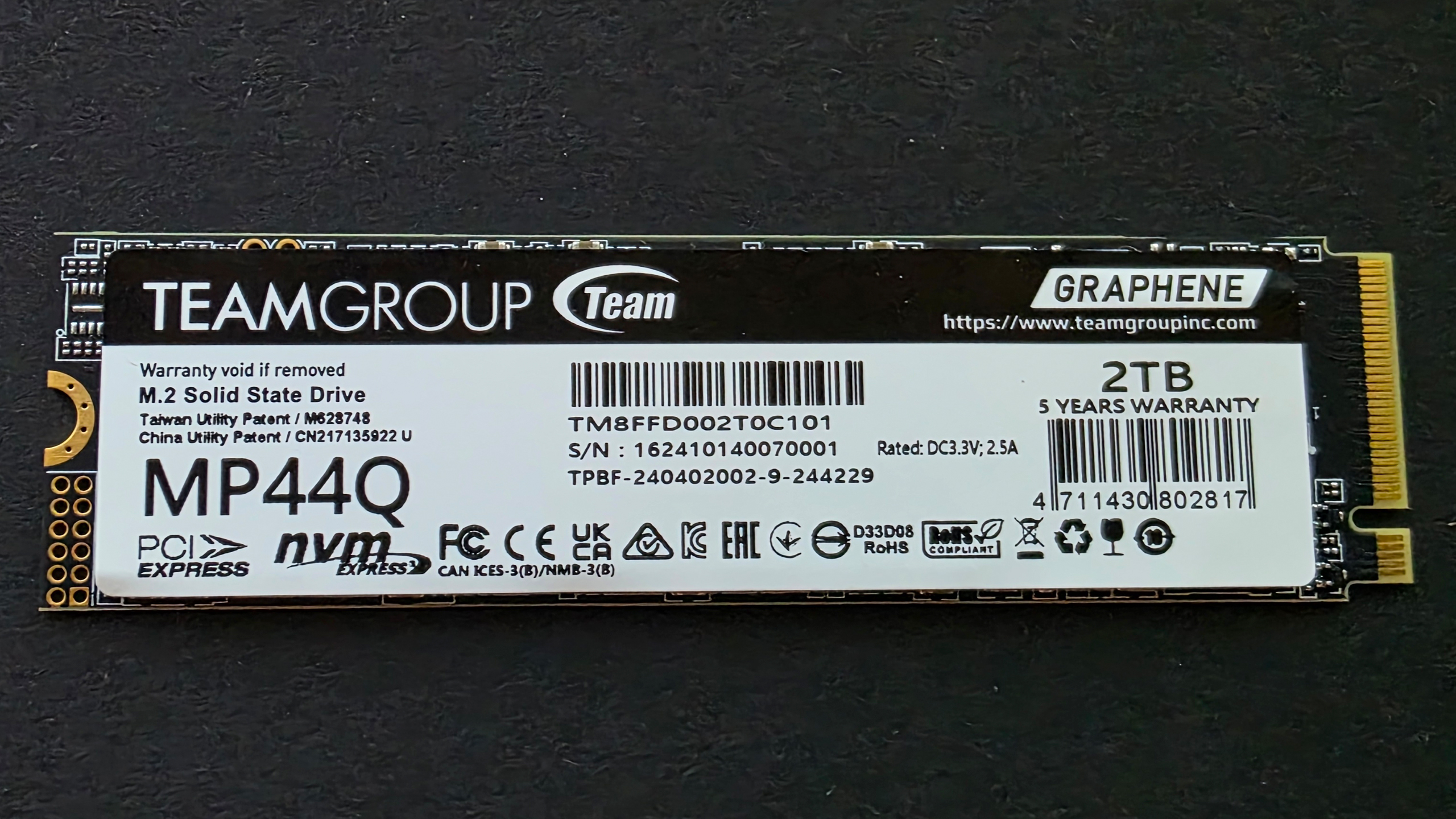
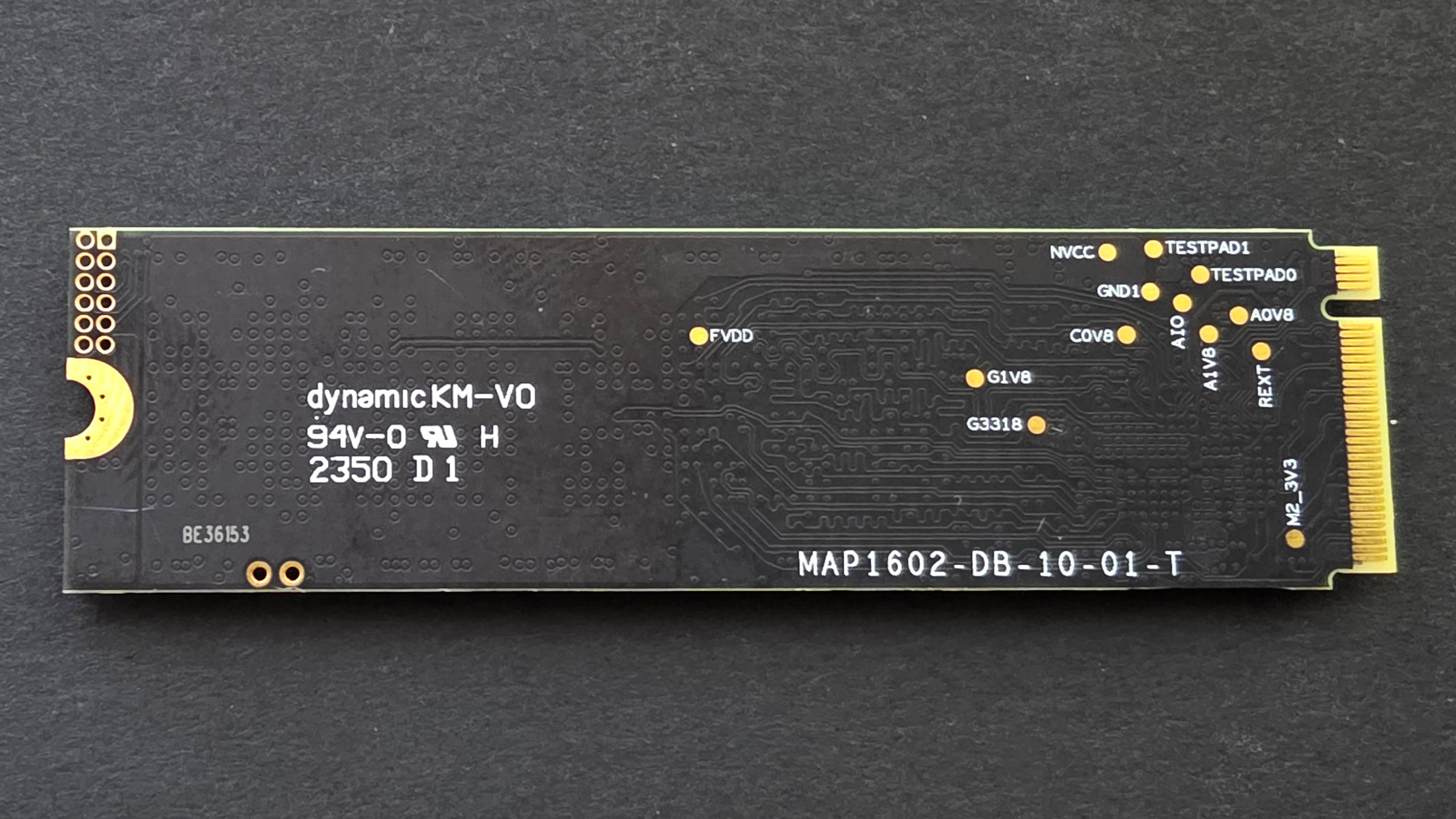
The TeamGroup MP44Q is a single-sided drive at all capacities, which is nice for systems where a double-sided drive might be problematic, like in most laptops. Single-sided drives can also be easier to cool with all the main components on an exposed side that can take a heatsink and/or thermal padding. The PCB is fairly standard with the “MAP1602” marking indicating it’s for drives using the Maxio MAP1602 SSD controller. This controller is a popular DRAM-less solution at the upper end of PCIe 4.0 speeds, making it a suitable fit for systems of all types.
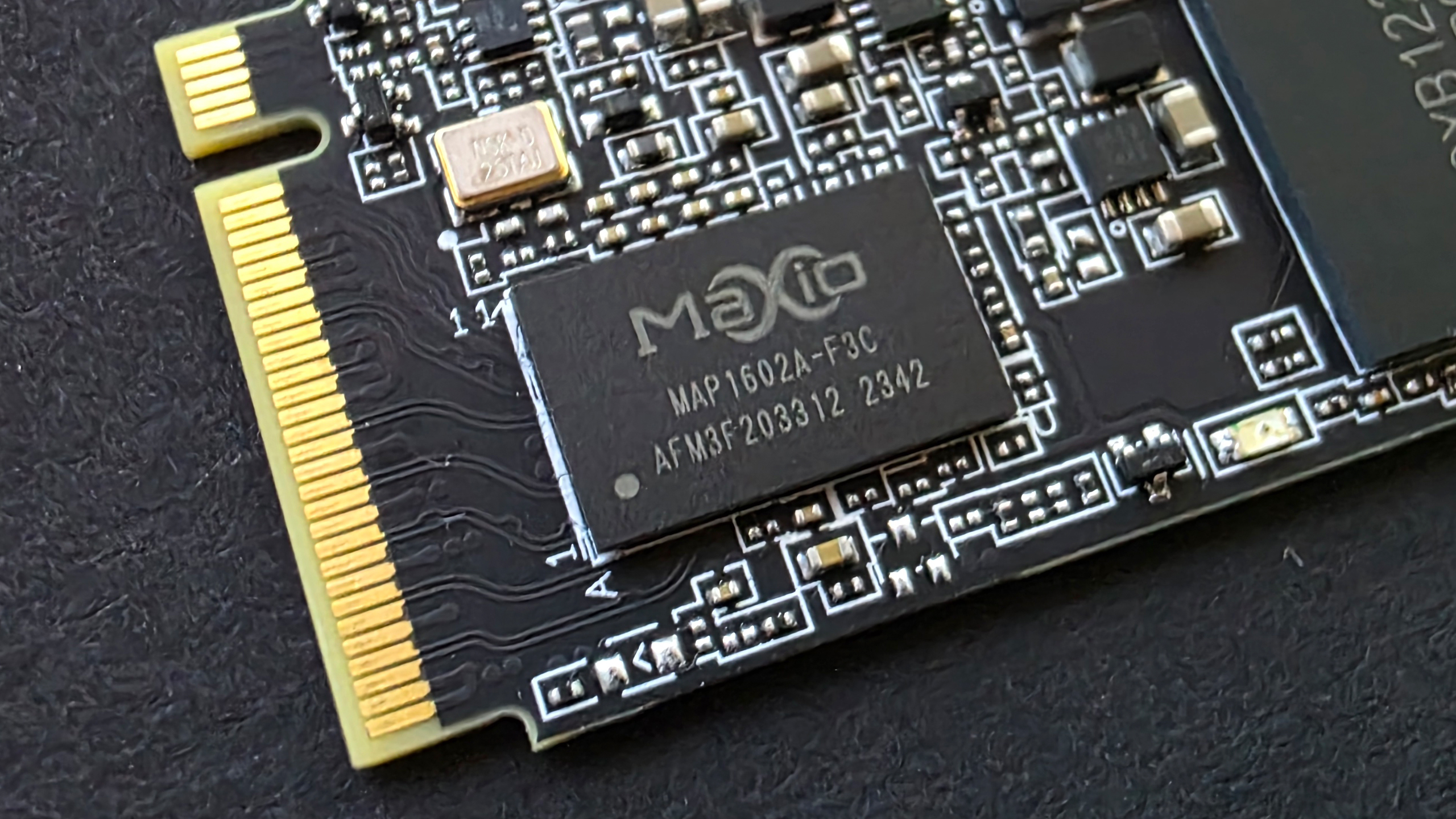
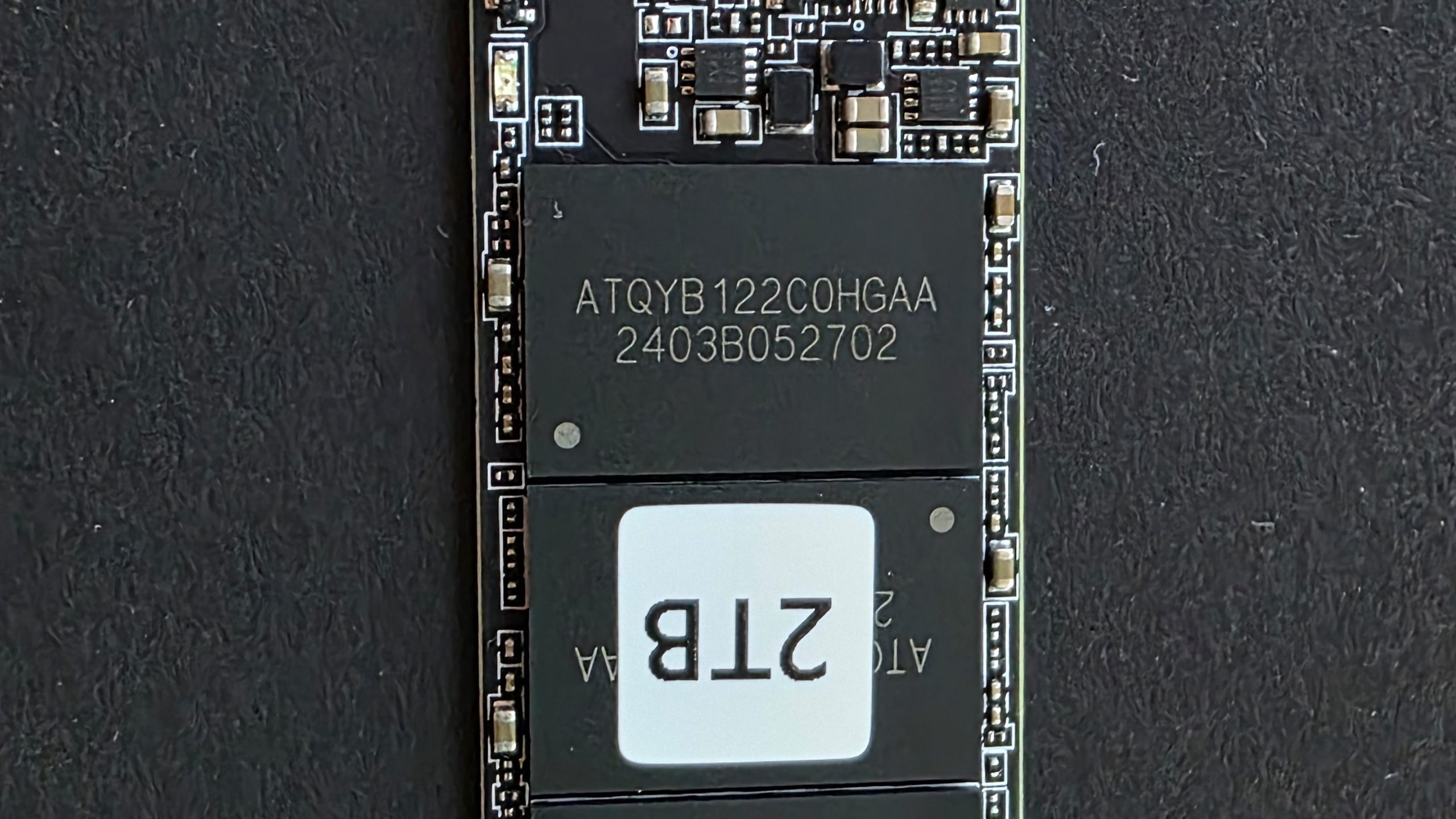
This controller has been around for a while and is tried-and-true, being competitive with the alternatives from Phison and Silicon Motion. Usually, we have tested it with TLC flash, but it works well with QLC, too. Check our HP FX700 review for more information on the hardware. We’ve included that drive for comparison in this review, but our previous review has fuller technical details. To quickly sum up the YMTC QLC flash being used, it performs comparably to Micron’s QLC of this generation, a fact which can be investigated more directly by following the Crucial P310 in our comparisons below. We’ve also reviewed the P310 in the M.2 2280 form factor, but the performance specifications are identical.
Get Tom's Hardware's best news and in-depth reviews, straight to your inbox.
MORE: Best SSDs
MORE: Best External SSDs
MORE: Best SSD for the Steam Deck

Shane Downing is a Freelance Reviewer for Tom’s Hardware US, covering consumer storage hardware.
-
Stomx Typically all current TLC NVMe of all consumer drives claim 600 TB per 1 TB drive which means that the real endurance is less than 600 program/erase (P/E) cycles because to reach this values all the tricks like the over-provisioning, wear-leveling, and advanced error correction clearly were used.Reply
This QLC drive reached 500 TB per 1 TB drive when everyone heard all their life that the endurance typically scales by an order of magnitude when you increase number of bits per cell: it is approximately
SLC 1 bit/cell - 100k P/E cycles
MLC 2 bits/cell - 10k P/Ecycles
TLC 3 bits/cell - 1k P/Ecycles
QLC 4 bits/cell - 0.1k P/Ecycles
If these QLC drives are that good and using all advancements in materials and tricks in controllers almost reached TLC why the TLC in their turn have stuck with their less than 600 cycles for decades and did not reach MLC ?
Don't you smell something fishy? -
Maxxify Reply
You won't find SLC or MLC anymore, obviously, although you can get pSLC drives and some low latency flash is MLC now. That said, we know the endurance rates and we'll say you're close enough on those two (pSLC/SLC mode will be 50K-250K depending, MLC can be up to 30K). TLC, however, is in the 3K to 5K range (10K for eTLC) although lower-grade (media) can get 1.5K or lower. QLC is usually up to 3K these days with a low around 700-900 PEC. Although with consumer use as you have with this drive, the endurance will be higher since most or all writes will hit the SLC cache which has higher endurance among other things.Stomx said:Typically all current TLC NVMe of all consumer drives claim 600 TB per 1 TB drive which means that the real endurance is less than 600 program/erase (P/E) cycles because to reach this values all the tricks like the over-provisioning, wear-leveling, and advanced error correction clearly were used.
This QLC drive reached 500 TB per 1 TB drive when everyone heard all their life that the endurance typically scales by an order of magnitude when you increase number of bits per cell: it is approximately
SLC 1 bit/cell - 100k P/E cycles
MLC 2 bits/cell - 10k P/Ecycles
TLC 3 bits/cell - 1k P/Ecycles
QLC 4 bits/cell - 0.1k P/Ecycles
If these QLC drives are that good and using all advancements in materials and tricks in controllers almost reached TLC why the TLC in their turn have stuck with their less than 600 cycles for decades and did not reach MLC ?
Don't you smell something fishy?
So it's not really nearly as bad as you say. And in this case you're revealing a truth I've been saying for well over five years now: warranty is not endurance. It's just amount of writes OR period of time. The amount of writes is arbitrary; the manufacturer sets it largely for marketing purposes. Yeah, it cuts down somewhat on RMAs and prevents people from using them as enterprise drives, but it's really just an easy target to hit where they can swap up the flash later if they need to (consider the E12 which had tons of changes but kept the same TBW).
600 PEC in fact means nothing. Good TLC in a consumer drive with normal daily workloads could survive up to 10K PEC. There's nothing fishy. There's just no reason to cover that many writes for people who are loading Instagram and CS for at most 10GB of writes a day when you are only covering the drive for 5 years anyway. -
Stomx Reply
Was nice to hear all this which sounds sweet like a Saturday night tales. Hopefully you are not a sales rep or working for NAND companies because I do not like to wake up after this in completely different reality. :)Maxxify said:You won't find SLC or MLC anymore, obviously, although you can get pSLC drives and some low latency flash is MLC now. That said, we know the endurance rates and we'll say you're close enough on those two (pSLC/SLC mode will be 50K-250K depending, MLC can be up to 30K). TLC, however, is in the 3K to 5K range (10K for eTLC) although lower-grade (media) can get 1.5K or lower. QLC is usually up to 3K these days with a low around 700-900 PEC. Although with consumer use as you have with this drive, the endurance will be higher since most or all writes will hit the SLC cache which has higher endurance among other things.
So it's not really nearly as bad as you say. And in this case you're revealing a truth I've been saying for well over five years now: warranty is not endurance. It's just amount of writes OR period of time. The amount of writes is arbitrary; the manufacturer sets it largely for marketing purposes. Yeah, it cuts down somewhat on RMAs and prevents people from using them as enterprise drives, but it's really just an easy target to hit where they can swap up the flash later if they need to (consider the E12 which had tons of changes but kept the same TBW).
600 PEC in fact means nothing. Good TLC in a consumer drive with normal daily workloads could survive up to 10K PEC. There's nothing fishy. There's just no reason to cover that many writes for people who are loading Instagram and CS for at most 10GB of writes a day when you are only covering the drive for 5 years anyway.
But if you are, let's leave aside QLC ( I do not believe in extreme tales, more about this below) please find me at least one example of TLC which will not degrade in a year or two with my 1-2 TB write per day. I thought I use only best NVMe like WD Black 850x 2-4 TB (with 1200 and 2400 TBW) and the strong impression is that they start losing directories, turn into read-only state or cause run time crashes approximately at these claimed TBW or less. So the TBW for me do not 'mean nothing'. Will need more statistics of failures to be 100% sure.
But I am sure that any claimed numbers of P/E cycles are well scientifically defined values anyone can check otherwise the progress is impossble if researchrs do not know how define it. Hence if somebody claim for QLC unbelievable 3000 P/E cycles this can be easily verified. And if it is well defined, then please explain me how it is even possible to make using these QLC to create drives with TBW equivalent to SLC (so called pSLC with 100k PEC ) with ANY imaginable controller tricks , and whatever else, besides sparing for over-provisioning 30 times (=100k/3k) more cells just to cure dead cells while manufacturers claim they do that with only 30% more. How this could be possible if you are substituting crappy cells with the same crappy cells with the same crappy lifetime?
By the way if you add 30% more spare cells to fix dying ones then you completely lose the purpose of using QLC instead of TLC because you would guaranteed increase endurance without any tricks by an order of magnitude just by using the same amount of cells with TLC and QLC
And after that we logically return again to the same question - don't you feel something fishy here? Like planned adolescence for example. Imagine some eternal NVMe which never breaks. That means zero profit for the rest of eternity for the flash companies after one sell. And that explains why so much efforts with QLC and no progress in TBW of consumer TLC. All TLC claim 600TB for 1TB drives and I will repeat WHICH REALLY MEANS P/E LESS THAN 600 and that means that the further progress in TLC has a chance to potentially make such virtually 'eternal' consumer drives for these Instagram users. Indeed if QLC is 3000 PEC, then TLC should reach 30,000 not 600 like today -
Maxxify TBW is virtually meaningless as explained above. You can find E12 drives (for example) where they changed controller AND flash multiple times but kept the same TBW. Even with changes in ECC quality of the controller and flash PEC, sometimes even TLC/QLC. On top of that, there are drives that use anywhere from 900 PEC media grade to 3000 PEC consumer grade flash even on known E18 drives (again for example) that my community has pulled with MP tools. It's literally just a cap for the warranty period to keep people from writing 1TB-2TB a day. If you want to do that, get an enterprise drive with eTLC (enterprise instead of consumer cTLC), although the type of writes matter in that calculation as well (this is why JEDEC is different for client and enterprise).Reply
PEC is part of the datasheet and is in fact scientific. Estimates can be made by interpolation, though, by baking the flash. Even then there is variance in the PEC of one flash die to the next, however the quality is definitely well-known and defined into discrete tiers of quality for different applications. The datasheets also define endurance in the pSLC/SLC mode for each die type (and each flash type can have multiple quality levels with different native and SLC PEC).
Some YMTC QLC is actually rated for up to 5000 PEC and certain specimens can hit this or higher. It's not just about flash quality, it's also about improvements to ECC, in programming (see Intel's 192L PLC technical digest), and in manufacture (YMTC's improved WoW process). In SLC mode it's acting with 1-bit data per cell so the higher endurance in that mode comes from wider voltage thresholds.
Modern cTLC is around 3000 PEC for the most part in consumer drives (10000+ for eTLC) but can often hit 5K or more, the reason you see QLC getting closer to TLC is because you don't need more than a certain quality level for consumer flash/drives. Early Samsung 3D flash was rated for 30K then 20K then 10K cycles and SLC and MLC disappeared for TLC because the trade-off for endurance just isn't worth it. Consider that XL Flash and Z-NAND which was to compete with Optane/3D Xpoint (technically) even migrated to 2-bit MLC.
600PEC via TBW is plenty for 99% of people (Samsung stated 98%+ when they switched the Pro series to TLC, literally in their literature) but for consumer workloads most flash will survive 5-10x this. If you're doing enough writes where you exceed that TBW significantly then it's probably not consumer so might have more effective wear. Even then, an average drive will have flash that can survive multiples of the standard TBW. Most drives actually fail for something other than flash wear, this is also documented as companies like Phison do a ridiculous amount of testing on drives and RMAs.
